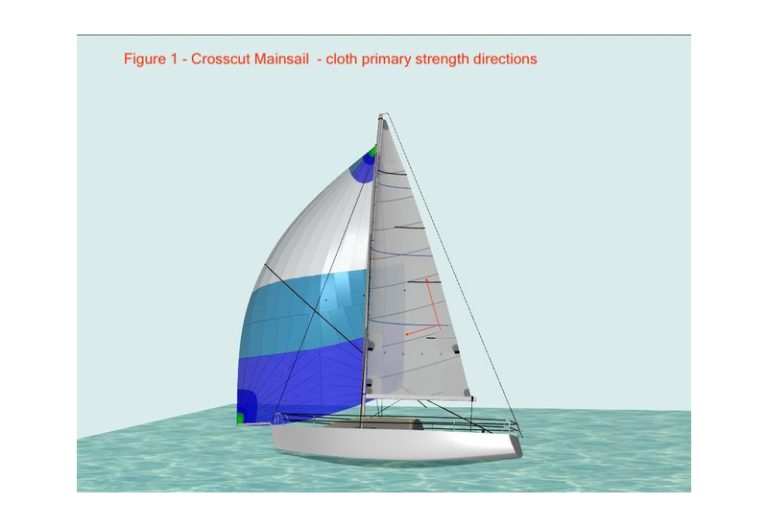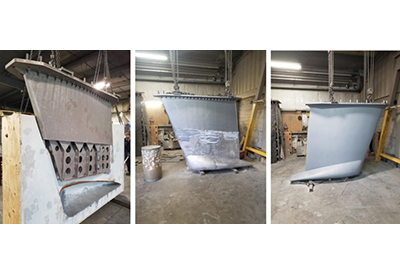Sail Techology: Selecting your PHRF Racing Inventory

Feb 16, 2022
The Weeknight Grand Prix! There are more keelboats racing using a performance handicapping system like PHRF on any given night than all One Design fleets put together. There are some excellent measurement rule systems as well to get a performance handicap, but none are as easy to implement at the club level as PHRF. If you are going out Wednesday night racing, it is very likely to be using PHRF!
Figure 1 – Mainsail and AP #1 Headsail – The backbone of weeknight sailing
What makes a good PHRF sail inventory? My inner sailmaker cries out to recommend a comprehensive inventory that will give top performance in every conceivable condition and point of sail. The reality is that this would be a very expensive suit of sails that would fill a half sea container, and overflow into your garage and spare bedroom. Please read no further if this sounds like a good idea, then give me a call.
NFS vs FS
Let’s begin by separating club racing into the respective fleets, Non Flying Sails (NFS) and Flying Sails (FS). A NFS fleet sails with only a normal suit of upwind sails and no flying or spinnaker type sails. This is generally the bulk of the weeknight sailing fleet, known for good competition for a wide range of boats. This use presents a difficult set of conditions for a set of sails. Ideally you would always have the largest and lightest sail you have onboard for going downwind when the apparent wind decreases and unloads the sails. This works most of the time, but what about when it is a bit breezy, and you should be using a smaller and heavier built headsail for going upwin
I suppose you could do the upwind legs with a heavier duty smaller headsail and change sails at the windward mark to get the lighter and larger sail up. PLEASE NOTE – I’ve done lots of headsail peels in my life, and they never go as fast as you think they will! Age, hard earned wisdom and experience has convinced me that you are better off doing a quick bareheaded headsail change than trying to peel headsails.
Because of the time to change sails, you are likely better off grunting it out with either the smaller headsail downwind, or hanging on with too much sail upwind.

There is a sail setting option to help make life simpler. Tuck a reef in the main and have a robust all-purpose (AP) type headsail that can structurally take the stronger wind conditions. I have to admit that I would also consider a small reef of the genoa if you have a roller reefing system. I know that is a supposed sacrilege to roller reef a sail during a race, but control of your boat is important. You don’t want to get a crash course in Part 2 of the Racing Rules of Sails, the section that covers “When Boats Meet”! It is easy to shake a main reef at the top mark and put it back in as you depart the leeward.
Figure 2 – Mainsail and #3 Jib – A great upwind combination, but may lack power on the downwind legs

So, what is my ideal NFS inventory? A good mainsail with at least one reef, an AP #1 Headsail for most of the time and a #3 Heavy Jib for those glorious occasional days where the breeze gets up over 18 knots or so. Everyone will now ask “What cloth should the sails be made from?”. Talk to your trusted sailmaker about this one. It really depends on your lifetime expectations, budget, and how much load your particular boat design can generate on the sails. Most boats will be well served by a high quality woven polyester cloth, or some laminate options if your boat is over 40’.
Figure 3 – Mainsail reefed and AP#1 – Tames the helm for control upwind and allows full area downwind
Flying Sail choices
Flying Sails (FS) fleet racers don’t have to compromise on having the correct headsail up on the upwind legs, since the spinnaker will be used for the downwind legs. This downwind sailing time also allows the opportunity to change sails as the wind builds or dies.
The basic starting inventory should be the same as the NFS inventory with the addition of an S2 (Symmetric All Purpose) spinnaker or A2 (Asymmetric Running) spinnaker for the downwind legs. This setup gets you upwind and downwind reliably, and you should have good pace around the course from 6- 25 knots.
The next stage of inventory would be substituting a Light Medium #1, and a middle range #2 headsail for the AP #1. This allows the largest sail to be optimized for 4-12 knots and the #2 can handle 11-18 knots with more delicate control over the boat. This also works well to keep the crew busy with at least one sail change, since most evening races start out with the tail end of a thermal and die down over time. The flatter #2 sail will give a great first beat, and you can change to the Light Medium #1 on the first downwind for the following legs when the breeze dips under 10 knots.
Beyond this inventory, you start adding a reaching spinnaker, possibly a Jib Top Reacher, a Storm Trysail and Storm Jib if you decide to do some overnight or longer races. Anything beyond this point you really need to consult your sailmaker to see what holes there may be in the performance envelope of your boat. There are as many specialized that fit specific needs to write a book about.
Later, I can discuss some of the other ways to optimize your sail sizing to help balance your individual boat design’s handling and performance. This is quite boat specific in most cases, but it can make the boat sail better for your crew and give a fair adjustment to handicap numbers. Some PHRF regions are still quite locked onto the rigid dimensioning taken from the old IOR measurement rules, and other more progressive PHRF regions allow you to sail with an easier to handle sail configuration and allows credits for smaller sails and reasonable penalty structures for increasing them.
 Keven Piper, two-time Shark 24 World Champion, founded Hamilton, ON-based Bay Sails in 1998. Email: baysails@gmail.com
Keven Piper, two-time Shark 24 World Champion, founded Hamilton, ON-based Bay Sails in 1998. Email: baysails@gmail.com















